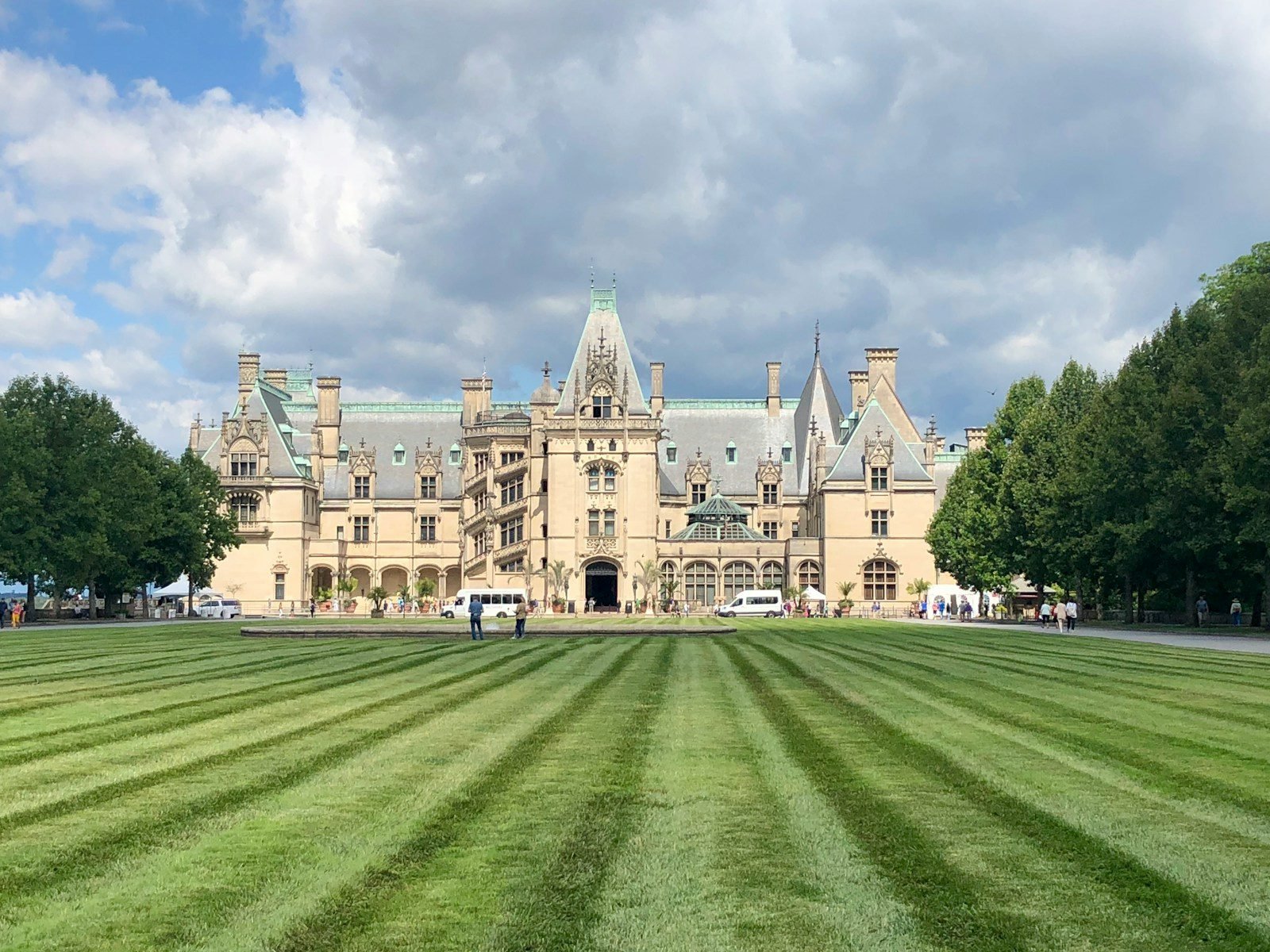
Table of Contents
The Biltmore Estate is renowned for its magnificent architecture, lush landscapes, and historical significance. When Hurricane Helene struck, it left the estate vulnerable to extensive damage. However, through skilled restoration efforts, the estate’s timeless beauty was revived, showcasing the dedication of its caretakers. Below are the five critical ways in which the estate restored itself after the storm.
Landscaping and Garden Recovery: Restoring Olmsted’s Vision
The Biltmore Estate’s gardens are one of its most important aspects. They are extensive and meticulously designed. The famed landscape architect Frederick Law Olmsted originally created them. Hurricane Helene brought high winds and heavy rains. This devastation affected many of the trees, plants, and flowers. It left the once-beautiful landscape in disrepair. However, the estate’s team of expert horticulturists acted quickly to restore the gardens to their former splendor.
The recovery process involved clearing debris. It included replanting damaged areas. The team also restored some of the estate’s iconic features, such as the Italian Garden and the Walled Garden. Specialists took the opportunity to ensure faithfulness to Olmsted’s original vision. They also selected plants more resilient to future storms. This ensured that Biltmore’s vast gardens, which host thousands of visitors each year, remained both beautiful and sustainable.
The estate’s gardeners paid special attention to rare and historical plant species. They worked with local nurseries and botanical experts. They sourced replacements for the rarest plants. They ensured that the restored gardens would not only match but, in some cases, surpass their original conditions. This commitment to historical authenticity and environmental resilience was crucial in preserving Olmsted’s timeless landscape.
Architectural Restoration: Preserving the Legacy of George Vanderbilt
The Biltmore House itself is a marvel of Gilded Age architecture. It faced minor damage from the storm. The damage affected its roof and exterior stonework. George Washington Vanderbilt II built the house in the late 19th century. It is one of the largest private residences in the U.S., with 250 rooms. The estate wanted to restore it without compromising its historical integrity. They hired skilled restoration specialists. These specialists are familiar with the materials and methods used during the original construction.
The restoration crews carefully repaired the estate’s roof. They used traditional materials, such as the original slate. This approach ensured that modern interventions blended seamlessly with the historical structure. The workers focused on maintaining the visual aesthetics while improving the building’s durability against future natural disasters. Damage to windows was carefully repaired. This included some of the estate’s original stained glass. Restoration used both historical and cutting-edge restoration techniques.
What makes this process remarkable is the attention to both preservation and modern innovation. Biltmore is now better equipped to withstand future storms. This is achieved by reinforcing the structure with advanced materials. The building maintains its 19th-century grandeur. The craftsmanship involved in this restoration highlights Biltmore’s commitment to preserving its legacy for future generations.
Conservation of Art and Historical Artifacts
The Biltmore House holds an extensive collection of art, antiques, and historical artifacts. These items are invaluable to both the estate and American history. The estate’s curators took immediate steps to protect and conserve these treasures after the storm. Many pieces were temporarily relocated to secure areas during the restoration. This relocation ensured they were not exposed to additional risk.
Special attention was given to textiles, paintings, and fragile furniture. Teams of art conservators inspected each piece. They worked to clean each one. They restored the items that showed signs of water damage or wear from the humid post-storm environment. This process required deep expertise in art preservation and conservation, as many items were over a century old.
The storm affected the estate significantly. This provided an opportunity for the curatorial team to re-evaluate the preservation conditions within the mansion. The climate control systems were improved. These improvements better regulate temperature and humidity. This ensures that these historical treasures are safeguarded for years to come.
Rebuilding Visitor Infrastructure: Enhancing the Biltmore Experience
Biltmore is more than just a historical house and garden. It is a major tourist destination. Over a million visitors are attracted annually. Hurricane Helene caused damage to the estate’s visitor infrastructure, including walkways, parking areas, and buildings used for guest services. The estate used this as an opportunity to repair the facilities. They also improved them, making the facilities more resilient. This enhanced the overall visitor experience.
Upgrades were made to paths and walkways, using materials that better withstand the region’s weather conditions. In particular, the estate focused on making these areas more accessible to all visitors, expanding pathways and improving mobility accommodations. Parking areas were also redesigned to manage stormwater more effectively, reducing the risk of future flooding.
The estate’s management took this opportunity to invest in sustainability. They incorporated green technologies such as permeable paving and improved drainage systems. Biltmore Estate combines historical preservation with modern sustainable practices. It sets an example for how historic sites can adapt to changing environmental conditions.
Community Involvement: A Unified Effort
One of the most heartening aspects of Biltmore’s restoration was the involvement of the local community. The estate has long been a cornerstone of the Asheville area, providing jobs and supporting the local economy through tourism. After Hurricane Helene, many local businesses and volunteers stepped up to assist in the recovery efforts.
Local artisans were hired to help with the restoration of both the interior and exterior of the estate. Their expertise in woodworking, masonry, and metalworking proved invaluable in restoring many of the estate’s intricate details. Furthermore, local nurseries and garden suppliers played a crucial role in the replanting and landscaping efforts.
Biltmore also held community events to raise funds. These events raised awareness for the restoration. This effort ensured that both the estate and its surrounding region bounced back from the storm’s devastation. This collaboration strengthened the bond between the estate and the local Asheville community. It showed how historical preservation can unite people in times of crisis.
Conclusion: Preserving a Timeless Legacy
The restoration of the Biltmore Estate after Hurricane Helene showed the estate’s resilience. It also demonstrated its commitment to preserving historical significance. The team restored Olmsted’s gardens with care. They ensured the longevity of Vanderbilt’s architectural masterpiece with precision. Each step respected the estate’s legacy deeply.
The estate continues to welcome visitors from around the world. Its restored beauty serves as a reminder of the power of preservation. It highlights the importance of protecting historical landmarks for future generations. The Biltmore Estate not only survived Hurricane Helene. It emerged stronger. It continues to inspire awe and admiration for its timeless elegance.
- Frederick Law Olmsted’s Legacy
Olmsted’s landscape design at Biltmore is legendary. Learn about his contributions to American landscapes and explore his other works at the Olmsted National Historic Site. - Biltmore Estate History
Want to know more about the history of Biltmore Estate and its architectural grandeur? Visit the Biltmore Official Site. - Hurricane Preparedness for Historic Sites
Discover best practices for protecting historic landmarks from natural disasters at the National Trust for Historic Preservation.
